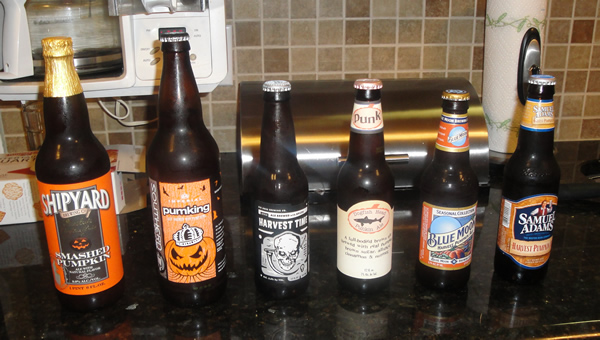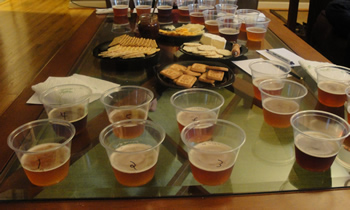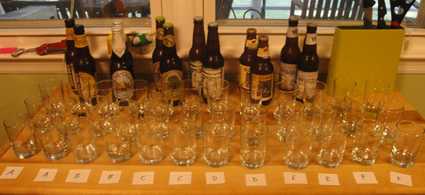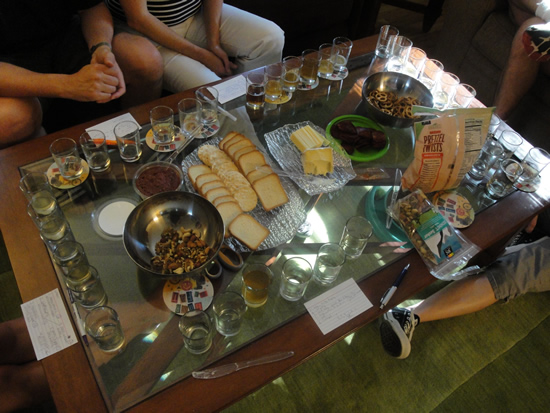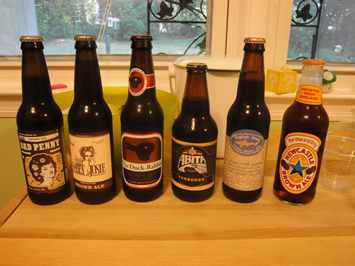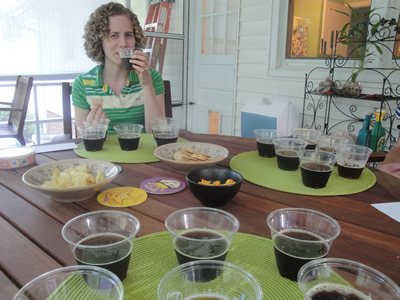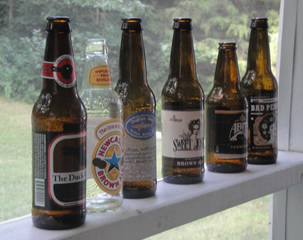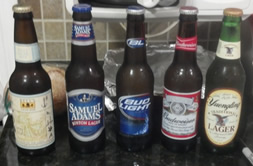I
On a trip to Scotland a few years ago, my wife and I happened upon a history of video games exhibit in Edinburgh. After a flat entry fee you could play everything. The exhibit started with arcade games, then took you through consoles, PC gaming, and had tons of new experimental stuff across platforms. I thought this would be good for a few hours of fun but it ended up greatly influencing my gaming ever since. It should be made clear that I am completely out of the loop on video games, having made only occasional forays into the 21st century. But for one thing, we learned about Jakub Dvorský, and stop reading this post and go play Machinarium, Botanicula, and the Samorost series immediately. I also learned about what would become my next great gaming madness: SimCity.
The original SimCity was set up on an ancient PC. I’d somehow missed it even though I have done most of my life’s gaming on ancient PCs. Kristen was excited about it. She’d played it growing up and showed me a bit about how it worked. I was super-interested immediately. I mean, of course I was: it combined maps with planning! As a game! As soon as we got back home I checked Good Old Games and was sorta disappointed they didn’t have the original, but they did have SimCity 2000. Something taking place in the distant year of 2000 might have been too advanced for me, but I decided to give it a try.
Then I played it for two months solid. I read a whole book about it. I built lots of crappy little cities with intractable design problems. Then I abandoned them and built a huge elaborate city called New Arran (in honor of the Isle of Arran, my favorite part of the Scotland trip) that filled out the whole map and made it to self-sustaining happiness. It’s been a couple years but I still think about New Arran. Some cool old neighborhoods there. Seems silly but as the mayor I lived in a huge mansion near the hip old downtown and the baseball stadium. My people loved me. Of course I still think about it.
I’d just been waiting for a good time to pick it up again.
II
SimCity’s delight is in its slow burn. You can see everything you’ll eventually have, but you can’t just have it. Other quest games gently introduce new challenges, but give you more abilities to deal with them. SimCity is a blank canvas where you can imagine a lot more than you can actually pull off immediately.
The bottleneck is cash. You start with a nice wad to bankroll some initial infrastructure, but you quickly run out and start spending more and more time passively watching the days go by (liberally using the “speed up time” feature), reading the sim newspaper and letting the city coffers fill back up with tax funds. There aren’t a lot to be had at first, either, because you don’t have that many residents. If you get greedy you can issue a bond, but the crushing interest will probably doom you in the long run. This was my mistake on my first two or three cities. With New Arran, I was patient. I refused to take out loans, and lived within my means. This is the ultimate lesson of SimCity, and if you fail to heed it, you will watch your cities decay, and your abysmal Trumpian approval rating will make daily headlines.
III
Recently Kristen has been playing Neko Atsume, the absurdly cute cat collection game. It is also played in semi-real time. The game’s various cats visit your house when (1) you’ve sufficiently lured them with toys, (2) you’ve sufficiently lured them with food, and (3) they are in the mood. It works brilliantly for an iPhone because you check the thing multiple times a day. Neko Atsume always gives you a few things to do but not continuous action. You have to leave it alone for a while and come back later. But when you do, you’ll find some cats–or at least evidence they’ve been through.
I know real-time games aren’t a completely new idea but they never made sense to me in other contexts. I never wanted a Tamagotchi or something similar I could neglect and feel bad about. A friend was telling me about Little King’s Story for Wii, which required him to do all manner of village chores to run the place. Things would take time to grow and he’d have to attend to the village regularly. Then he lost interest in the game and didn’t play for a year or two. When he thought about it again and popped it in the Wii, the village was still there, covered in weeds. The people asked why he had abandoned them.
But the Neko Atsume model clicked with me, and I felt that I had an unfilled niche for an iPhone project game. There wasn’t a lot of new ground to cover with Neko Atsume. I have demanded, and received, regular cat updates already, which is great because Kristen is doing all the actual cat habitat maintenance. But I was vaguely aware there was a SimCity iOS port, so it was time to try it.
IV
My lack of gaming currency absolutely extends to the realm of iPhone apps. I have a few little games I dig, but I tend to stick with a few reliable ones rather than cycle through new stuff. At some point I discovered that this fantastic logic puzzle game I used to play on previously-mentioned ancient PCs called Sherlock had been ported to a phone app. I still play Ticket To Ride all the time. Over the summer I played a lot of Onirim. Anyway I seldom branch out because frankly, digging into the world of gaming apps turns me into a cranky, cynical, confused old man.
The in-app purchase freemium model has its value–not everyone can or should put out a cash outlay for a garbage product–but is more generally unadulterated shady carnie hucksterism. I got a racing game once. It was free! Unless I wanted to complete a whole lap. That cost $2.99 or something. In the middle of the race it stopped me to beg for money. “Have you enjoyed the last 11 seconds? Want to keep going?” Besides the fact that most apps are just crap, free or not. Craven rip-offs of more well known titles (“Who’s for some Smetris?!”) and Facebook-sign-in-required transparent marketing lead grabs dominate the filthily competitive morass that is the App Store. But as an employed adult that will pay a few bucks for a well-designed game, I realize I am in the vanishing minority of the clientele. For every one of me there are a hundred adolescents with zero phone attention span who don’t expect to pay a cent for anything online ever. They don’t have any money anyway, which is beside the point, because app developers already know that and their actual income is from harvesting and turning out marketing data to the actual good development firms.
Anyway I dipped my toe in for SimCity BuildIt. It had a little of the SimCity goodness: plan, build, grow, earn. Nice interface for the phone, easy to move things around, with a really nice look and feel. I initially liked the way I could play a few minutes here and there (i.e., employ it as a phone game as intended) then put it down for a while, and come back later to an accumulation of back-taxes, so I’d have the resources to do more. But like any poorly-financed real estate venture, it was doomed to failure.
In the classic game design, expenses would increase, but population would increase proportionally if I was doing things right, so I maintained a level of steady linear improvement. BuildIt is decidedly exponential. It is not designed to keep things rolling. It is designed to create ever more demands, at ever higher expense. Like movies on cable that suck you in with no commercials for the first 30 minutes, then pile them on as you get more and more invested, after a brief honeymoon period I started running into all kinds of expansion bottlenecks. There’s a leveling-up mechanism that opens up new buildings, and right alongside that, construction crews will start demanding whatever those buildings provide. New resources take longer to create. The in-game trading stops offering you anything you need. Citizens started requiring new services that I hadn’t planned for and required huge investments. That might have been the most annoying: with no warning or initial infrastructure needs, these feel exploitive and arbitrary. (The sewer-less lifestyle was perfectly fine for everyone until level 8!) The net result is that taxes and basic in-game economics stopped coming anywhere close to paying the bills.
So once I was past the early levels, all choices were clear:
- Wait literally days in real time with little or nothing to do in-game to get the resources necessary to make marginal improvements
- Make with the cash
This mechanic didn’t sneak up on me. Right from the start they tried tempting me to drop in a few dollars for an infusion of SimCash, which would have let me skip tedious tax collection and resource development in favor of just buying stuff. But with a large open canvas in the early levels, there was plenty to do and no real need to bother. Before long they dropped the subtlety and straight-up offered me rewards to watch commercials. I took them up on it many times, just letting the commercial play while I put my phone down for a minute to do something else. Still, as it went on I thought often of giving in and dropping a few dollars–after all, the app was free and I’d gotten some enjoyment out of it, why not support it and do more in-game? But the math never made sense. I’d have wiped out my SimCash immediately on a few improvements and been right back in the same crunch.
They know all of this. It is 100% designed to hook you in and begin extracting dollars. One can theoretically avoid that forever simply through patience. But I started also feeling like I was due for limited returns. The other thing that happened once I reached the middle levels is that I was required to start socializing. Join Mayor’s Clubs, join forums, launch attacks on other cities, and reciprocate by letting them do the same to me.
V
Multiverse Theory contends that we live in just one of an infinite set of possible universes. This is an amazing thought: it is possible that there are universes where Kristen and I lingered a bit too long for a drink and didn’t make it to the video game history exhibit, or the PCs were down that day, or some other thing that didn’t remind her of SimCity, and therefore never exposed me to it. Who knows what I could have done with the dozens of hours I spent obsessing over SimCity 2000. I’d be a different person today. And further, I never would have tried SimCity BuildIt and written two thousand words about it, intertwined with thoughts on my present-day gaming life.
Another thought about the Multiverse Theory is that there might be a possible universe among the infinite in which Parallel Josh was interested, in any capacity whatsoever, in getting entangled in some contrived virtual mayoral dispute and allowing them to destroy the city I just spent weeks developing.
Vanishingly likely is that, as in this universe, once this became a requirement of progress, I made peace with my stalled efforts and deleted the app.
I have since put down a few dollars each on Mini Metro and the very good port of Pandemic. I am much happier.
Epilogue
I know EA has a long track record of this kind of nonsense, well before SimCity BuildIt. They are routinely voted the Worst Company in the county in various polls. [Although frankly, this is ridiculous. Most of these polls are online and greatly skewed towards younger voters with exclusively first-world problems, and specifically teenagers with entertainment-focused first-world problems, with endless time on their hands and no real sense of scope. Any legit poll like this should be utterly dominated by insurance companies, oil companies, and the pharmaceutical industry.] But the recent rumpus over Star Wars Battlefront II, and its crushing microtransaction malfeasance, has provided me with great delight. I understand they have lost $3 billion in stock value as a result. Here we have a game design so horrendously corrupt it is literally altering the global economy, rousing legislative rumblings, and will likely upend software design trends forever.
I suppose microtransactions will never totally go away, they are probably an inevitable outcome of capitalism. But here’s hoping we are now post-peak.
